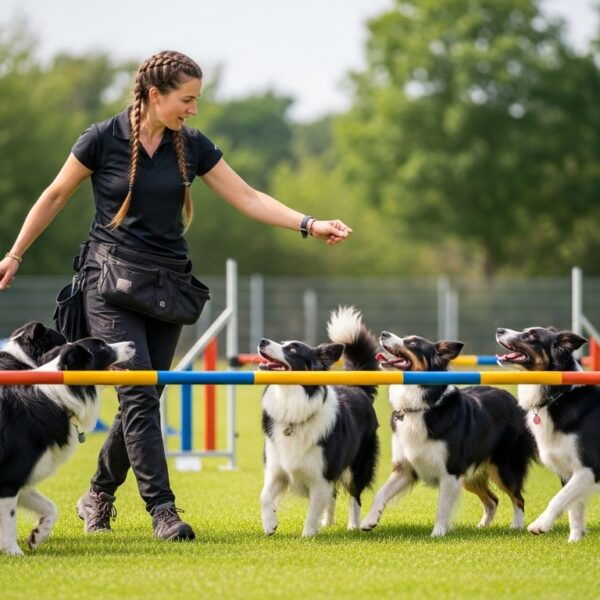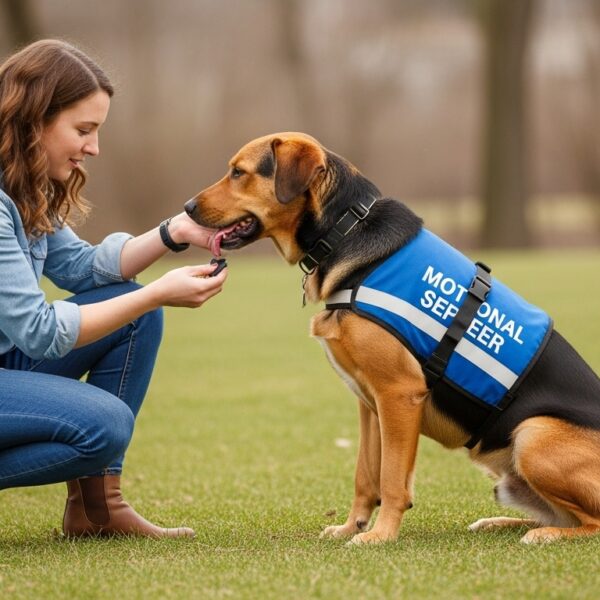Table of Contents
Introduction
Crate training is one of the best things you can do for both you and your dog. Not only does it help keep your pup safe and out of trouble when you’re away, but it also creates a cozy, personal space they can call their own. Whether you’re starting with a young puppy or helping an older dog adjust, learning how to crate train a dog is a valuable skill that benefits everyone—when it’s done right!
This step-by-step guide is packed with stress-free tips, simple instructions, and answers to your biggest questions. Ready? Let’s make the crate your dog’s favorite spot!
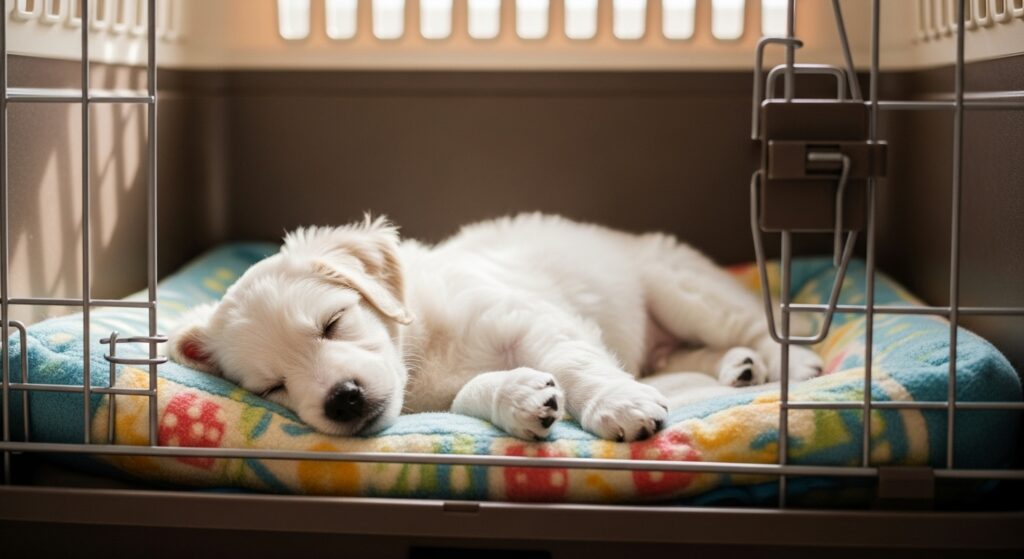
Why Crate Training Matters
Crate training isn’t just about housebreaking. It provides:
- A safe retreat: Dogs love having their own den-like space.
- Faster potty training: Most dogs will avoid messing in their sleeping area.
- Stress-free travel: Crate-trained dogs handle car rides, vet visits, and boarding much more calmly.
- Protection: Both for your stuff (like shoes and furniture!) and your dog.

Step 1: Pick the Right Crate
The first step in how to crate train a dog is selecting the perfect crate:
- Size matters: Your dog should be able to stand up, turn around, and lie down comfortably—nothing more, nothing less.
- Material: Most people use wire or plastic crates. Wire crates are great at home (good airflow), while plastic ones feel cozier and are great for travel.
- Location: Put the crate somewhere family-oriented but quiet, not isolated.
Step 2: Create a Welcoming Space
Make your dog’s crate appealing:
- Add bedding: Soft, washable blankets or a crate pad (avoid anything they might shred if your dog is a chewer).
- Leave the door open: Let your dog explore the crate at their own pace.
- Toss in treats and toys: Place favorite toys or some treats inside, making the crate a positive place.
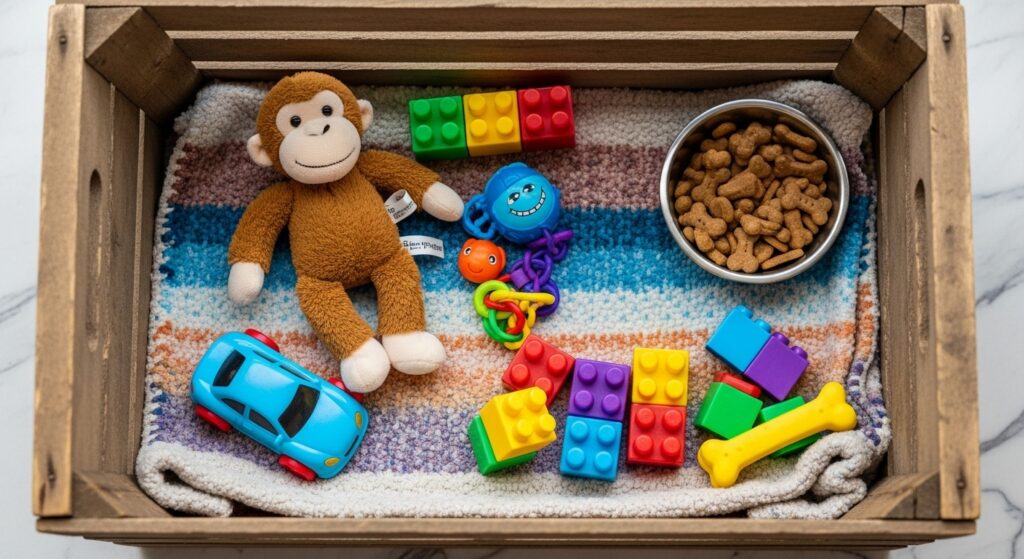
Step 3: Start Slow—No Pressure!
How to crate train a dog the gentle way:
- Encourage exploration: Each time your dog chooses to enter the crate, reward with praise or a small treat.
- Feed meals in the crate: Place their food bowl just inside the door at first; once comfortable, move the bowl all the way inside.
- Short sessions: Shut the door for a minute or two while your dog eats, then gradually lengthen the time after meals.
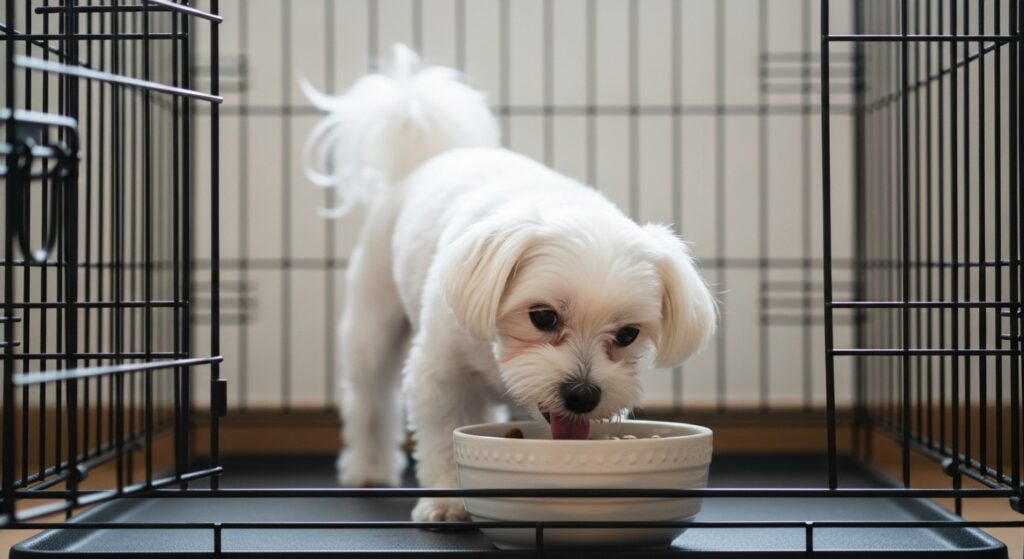
Step 4: Build Up Alone Time
Once your dog is happy going in and out, work up to leaving them in the crate for longer:
- Practice when you’re home: Start with 5–10 minutes while you’re in the same room.
- Gradually increase duration: Build up to 30 minutes, then try leaving for short trips out of the house.
- Don’t make a fuss: Keep departures and arrivals low-key to avoid creating anxiety.
Remember: Stay patient! Some dogs adapt quickly, others need more time.
Step 5: Avoid Common Mistakes
- Never use the crate as punishment.
- Never leave your dog crated all day. (Four hours at a time is usually the upper limit for adults; much less for puppies!)
- Watch for signs of distress: Whining at first is normal, but if your dog seems overly stressed, slow things down.

Troubleshooting Tips
- If your dog panics or barks, go back a step—don’t rush!
- Try feeding favorite snacks only in the crate to increase positive associations.
- Make crating part of the daily routine (like nap time or bedtime).
Benefits for Every Dog Owner
- Smoother house training
- Safe space during storms or fireworks
- Less destructive chewing when unsupervised
- Easier vet visits and boarding stays
Frequently Asked Questions (FAQs)
Q1: How long does it take to crate train a dog?It varies! Puppies may adapt in a few days; older dogs can take a couple weeks (or more). Be patient and celebrate small progress.
Q2: Is it cruel to use a crate?Not at all, when done right! Dogs naturally like cozy dens. The key is making the crate positive, never using it for punishment, and not leaving your pet crated too long.
Q3: My dog whines in the crate—what should I do?Ignore mild whining, as long as they don’t need a bathroom break. If whining is constant or frantic, you may have moved too fast. Slow down and add more rewards.
Q4: What if my dog has accidents in the crate?Accidents can happen if your dog isn’t fully potty trained or you’re leaving them crated too long. Clean accidents with a pet-friendly cleaner and try shorter crate intervals.
Q5: Can any dog be crate trained?Most dogs can! Some rescues with traumatic pasts may need extra time or professional help.
Conclusion
Learning how to crate train a dog isn’t just about house rules—it’s about building trust, making your dog feel safe, and giving yourself peace of mind. With time, kindness, and consistency, your pup will soon love their “den” as much as you do.


